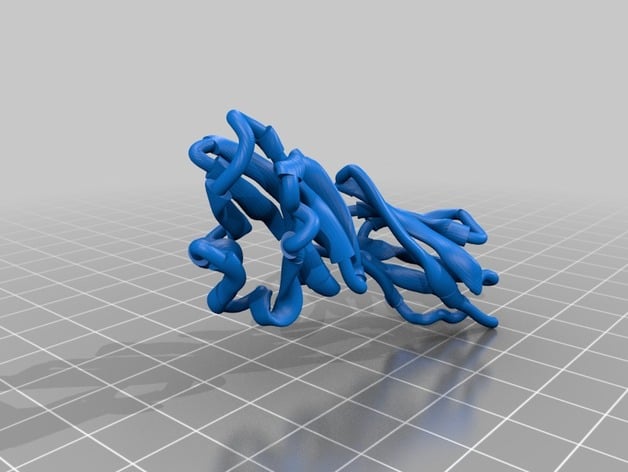
CD4
thingiverse
Three immunology students, Emeline, Chloé and Marine, prepared the stl file at the University of Toulouse (www.univ-tlse3.fr). Their stl file allowed printing of only two CD4 molecule domains. This "thing" was made to introduce pedagogy and test examination handling of 3D structures within a university course, producing portraits of molecules with immunological significance in a gallery. At the CampusFab LabLab (fablab.univ-tlse3.fr/wiki/index.php/Accueil), three-dimensional printing was executed by this group, tweeting their progress (@fablabups). The protein structure database PDB, containing information for thousands of molecular structures and sequences for proteins (www.rcsb.org/pdb/home/home.do) retrieved with the xxx accession number, includes detailed 3D representations. Using this data in a downloadable file extension called .gz from the University's resources, these students converted the PDB content to an STL compatible format for three-dimensional printing software. To complete preparation of the structure for print, Chimera (www.cgl.ucsf.edu/chimera/), powerful graphical application that creates visualizations for studying proteins, small molecules, nucleic acids and synthetic assemblies from databases was utilized. It enabled them to save files in .stl format for printing three-dimensional structures. Simplify 3D (https://www.simplify3d.com/) the comprehensive print preparation tool and printer interface with its vast list of customizable settings were leveraged on the Leapfrog Creatr HS 3D Printer.
With this file you will be able to print CD4 with your 3D printer. Click on the button and save the file on your computer to work, edit or customize your design. You can also find more 3D designs for printers on CD4.
